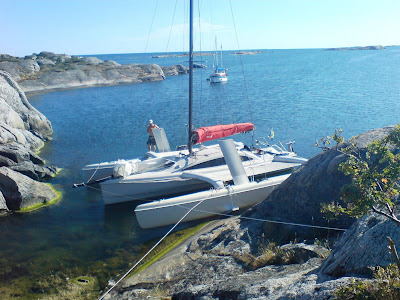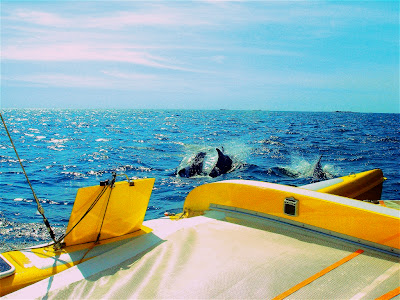
As mentioned in an earlier blog I promised to high light a few issues on our choice of beam system design. Amongst others, from time to time, we get questions on why we do not have water stays.
When defining the Seaon 96 we had to make decisions on the different parts of the boat. First of all we were very clear about using a folding system that would allow us to optimise performance and functionality “in the water” Yes – it was a conscious decision where we were aware of the added time needed for assembly/disassembly for trailering by not using the Farrier principle.
Having made this choice there were quite a few other parameters to consider:
• Folding operation – considering fatigue and maintenance of included parts
• Structural safety aspects and ease of assembly/disassembly operation for trailering, i.e. potential structural risks related to assembly need to be minimized
• Water resistance and spray
• Performance – considering energy consumed by movements in the beam system
• Comfort – beam system should be experienced as rigid possible, preferably as if the boat was non folding
• Calculation, construction and testing aspects
• Ease and cost of production
A large part of our consideration was about the safety and complexity of the folding and boat assembly where we wanted to eliminate as many “unknowns” as possible – basically this implied reducing as many parts as possible.
Obviously Stefan’s experiences from glider productions with modern construction methods for wing constructions also led us to evaluate a stiff construction which we valued would add to comfort and performance. For the boat to be rigid, the beams need to be stiff in both directions. An added benefit of this is that in (worst case!) case of a mast failure this construction adds to security due to beams not being dependent on shrouds to take care of excessive “negative loads”.
Another requirement was to make calculation, construction and testing as straightforward as possible. Again, reducing the number of parts very much supported this objective in many aspects. This requirement also allowed us to verify our calculations and constructions with experts from the marine and aviation industries.
So – in the end all these requirements led to a construction without water stays.
The beam system is constructed to take all loads on the front leeward beam during CE category B conditions. To verify this construction and also production variances, load tests were defined using hydraulics, a load cell and quite a sturdy test jig. (We almost tore a roof down due to lack of calculation of….the supporting pillars to which we initially connected the beam.)
A few production changes, testing and three beams later the construction was set. To monitor any potential material and production variations we also decided to set up a continuous load testing program in production, i.e. each beam is tested individually.


All research, evaluation and testing, as explained above, made us convinced this was the solution we were looking for our Seaon 96crb….and as mentioned before, it is not as “unorthodox” as it may seem at first, considering modern aircraft and Orma 60 designs.
/Jan


































